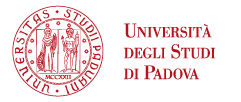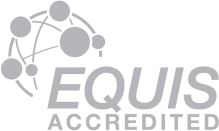Corruption and Extremism
The article "Corruption and Extremism" explores a crucial dynamic in democratic politics: how the perception of corruption pushes opposition parties or political minorities to radicalize and shift toward extremism. Although corruption harms all citizens, minority voters are more likely to turn to extremist representatives when they perceive the political system as corrupt. This reaction occurs because extremist politicians, who normally have a lower chance of winning against moderate opponents, have a stronger incentive to fight corruption. For them, the "opportunity cost" of taking a hardline stance against corruption is lower, since they have less to lose.
The article, authored by Attila Gáspár, Tommaso Giommoni, Massimo Morelli, and Antonio Nicolò, was published in the Journal of Development Economics.
In a theoretical model, the authors show that if the expected level of corruption is high, the equilibrium outcome in primary elections leads to a moderate representative for the majority and an extremist representative for the minority.
How was the model applied in Indonesia?
In Indonesia, the authors examine two electoral cycles—one immediately following the country's democratic transition (1999–2004) and a more recent one (2014–2019). Extremism is measured by the vote share for Islamist parties (PKS, PBB, PPP). Corruption signals are drawn from both media-reported scandals and official audits of local government budgets.
The findings are striking: in villages predominantly inhabited by ethnic minorities (identified precisely using census data), a corruption signal leads to a substantial increase—up to 8.5 percentage points—in support for Islamist parties, equivalent to about two-thirds of a standard deviation. By contrast, in areas dominated by ethnic majorities, the same signal has no effect or even reduces support for extremists.
What about Brazil?
Brazil provides another compelling case Unlike in Indonesia, for Brazil, the researchers measured extremism in terms of political extremism—both left-wing and right-wing. The study examines voting for far-left or far-right parties in municipalities where the local government was in opposition to the state government, and corruption signals come from randomized federal audits of municipalities.
Once again, the effects are concentrated in so-called “opposition” municipalities—those where the mayor does not belong to the same political coalition as the state governor. In these areas, a one standard deviation increase in detected corruption raises support for extremist parties by between 4.3 and 12.1 percentage points.
What implications might these findings have in non-democratic contexts?
These findings can also be valuable in studying ethnic and civil conflicts in non-democratic contexts, where violent struggles for power may replace electoral competition. For example, Palestinians increased their support for Hamas following revelations of Arafat’s corruption, and Hezbollah became the chosen representative of Shiite interests in Lebanon after the Amal corruption scandal.
There is a strong connection between corruption and the emergence of extremist opposition groups, along with a heightened risk of conflict.








